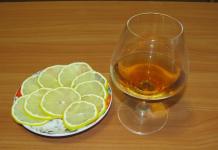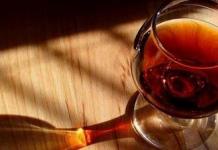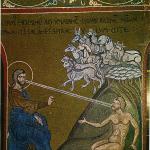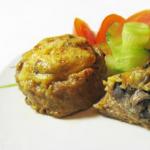Glue stick from Erich Krause is the No. 1 glue in Russia. It is the most popular glue among most Russians recent years. ErichKrause® glue stick with a new super-strong formula is made on the basis of the water-soluble polymer Polyvinylpyrrolidone (PVP), also called “polyvidone”. PVP based glue stick is different economical consumption, the fastest and most reliable gluing. The layer applied with ErichKrause® glue stick is easily washed off with water. The glue is non-toxic because it does not contain solvent. Container body in the form of a tube with retractable mechanism, significantly expands the scope of application of the glue, providing maximum convenience in transportation and storage.
PVP base glue stick
PVP is soluble in water, most solvents and various alcohols such as methanol and ethanol. When dry, it is a light, flaky, hygroscopic powder. In solution it has excellent wetting properties and easily forms films. PVP is safe for health, therefore it is actively used in medicine and food industry. It is used as a binder in many pharmaceuticals, various food and hygiene products, solutions, ointments, gels, liquid soap, shampoos, toothpastes. PVP is used in the production of contact lenses and eye drops. It is used in agriculture for plant protection and seed treatment. As a food additive, PVP is a stabilizer and is used in the wine industry in the production of dry wine and some beers.
Production of glue sticks
Glue stick manufacturing is a process that has changed greatly over the years with the introduction of high-tech computerized equipment. What until recently was carried out by physical labor is now almost completely automated. The adhesive base of the future glue stick is first mixed in large vats. Each manufacturer has its own recipe for this mixture, so not all glues are equally good: some glue worse, while others become the No. 1 glue in Russia.
Once mixed, the adhesive mass flows into a filling tank, which injects a perfectly measured amount of mixture into each plastic tube, which is neatly aligned on the conveyor belt. At this stage, the glue is very hot, so the filled tubes enter a cooling station, where they cool slightly and then enter a second cooling chamber, where the liquid glue is completely cooled to a solid state inside the tubes.
Applications of glue stick
Glue sticks are made from materials that are non-toxic and do not contain solvents or other hazardous materials. chemicals, so it became an ideal glue for preschool institutions and schools. The glue stick cannot be spilled and ruined furniture, floors or clothing. Working with it is careful and all those minor marks that happen are easily washed off with plain water. Almost all PVP-based glue sticks are non-toxic, but you should always carefully study the composition of the glue indicated on the packaging. All adhesive models from Erich Krause undergo the most careful control at all stages of production and immediately before going on sale. The safety of the ErichKrause® glue stick is guaranteed by relevant international certificates.
It is one of the most popular items in various fields: it is used by children and high school students during creative activities, teachers, office workers, accountants when working with documents. Securely gluing together various materials(paper, cardboard, thin textiles), a glue stick has a lot of additional advantages, which we will discuss in this article. But first, let's find out what glue sticks are made of, what varieties are available on the stationery market, and, of course, find out how safe it is for health.
A glue stick is indispensable in labor lessons for elementary school students.
A glue stick, for all its advantages, cannot be called universal. It is great for gluing paper, cardboard, and some types of fabric, but it cannot be used to glue, for example, plastic or glass; this will require a stronger adhesive.
Composition of glue stick and its main characteristics
The composition of the glue stick includes two main components: the adhesive itself, which has good adhesive properties, and a moisturizer. Based on chemical composition There are two types of glue:
- Glue stick based on PVA (adhesive - polyvinyl acetate) and water (humidifier).
- Glue based on PVP (adhesive - polyvinylpyrrolidone) and glycerin as a humectant.

Some types of glue sticks change color depending on the drying stage,
which is very convenient for gluing quality control
Despite the differences in composition, both one and the second type of stationery glue stick have many common properties, the main of which are:
- Absolutely non-toxic. The glue is harmless even in close contact with skin. Being completely safe in chemical terms, the glue stick does not cause harm, even if it gets inside (we are, of course, talking about children who can “feast” on anything, including glue). However, it is under no circumstances worth risking the health of children, and if you notice that a child, carried away by the application, has bitten off a piece of a glue stick, it is better to consult a doctor.
- Ergonomics. Glue stick is confidently ahead in popularity traditional types office glue, due to its exceptional ease of use: it does not spill, does not stain hands and surface areas adjacent to the gluing site, and has no odor.
- Economical. Thanks to the convenient tube and functional system application, the glue stick is used very sparingly, so even a small package will last you a long time. By the way, the glue stick has a long shelf life; you can store it for 1.5-3 years without fear that the composition will dry out.
There are some differences between PVA and PVP based glue. Thus, PVP glue is considered more “professional”: it has better adhesion to various types paper and textiles, is frost-resistant.
A significant advantage of a glue stick is that its application to the surface does not deform the material, which can happen when using regular office glue. This is very important when gluing papers and documents. Using a glue stick makes it possible to glue everything very quickly and accurately, without fear that excess adhesive will stain the surface and make it sticky.
It should be added that we have indicated only the main components of the composition of the glue stick, while each manufacturer can change it slightly. Yes, in some adhesive compositions aromatic fragrances may be added; special glue sticks for children often use glucose, which does not cause poisoning when ingested (of course, in moderate doses).

Many manufacturers produce special glue sticks for children.
in bright cheerful stickers
But in fact, it is not so much important what the glue is made from, but who exactly produces it. When purchasing this product, especially if the glue is intended for children, do not take risks and do not purchase the most cheap option of dubious quality. Only proven brands that have proven themselves in the stationery market with the best side, produce high-quality goods regardless of their final cost.
At the same time, so-called fly-by-night companies may well skimp on high-quality raw materials, as a result of which the glue may turn out to be not only poorly functional, but also hazardous to health.
The debate about what to use to improve bed adhesion for FDM printing will not subside soon, if at all. Quite a lot has been written about this. Well, we'll add a little bit. However, unlike many speakers, we will try not to give birth to another button accordion “I liked this, I didn’t like that,” but we will go from the other side and answer why we like this glue, don’t like this one and how to choose a glue stick if the ones mentioned are not on sale.
Let's go...
Like many, we tried a lot in search of adhesion. There were hairsprays (Preles, Taft strong and super-strong hold), adhesive tapes, various glasses (frosted and unmotivated, tempered and regular), adhesives like eco-naset (analogous to polystyrene titanium, but on water based) and industrial 3M, which is used to make adhesive tape. Yes, yes, like many others, we read 3D-today and noticed that many printed on what remains after peeling off various self-adhesives. We tried applying PVA glue. Thin and thick layers. We tried different applicators. Including iron and rubber spatulas. We bought PVA glue with a roller like a pen. But it wasn't all that...
We decided to adopt imported experience and began to look for where to buy this glue (no live photo):
This glue comes with a set with Cubex printers, which do not have a heated bed in principle, but print (quite successfully) from ABS. But they do have a thermal camera. In Russia it costs 1,500 rubles and so we began to look for it abroad and, in connection with this, began to communicate with printers from that side of the border.
So they suggested the right direction. According to them, all of Europe has been printing with UHU glue for a long time. Well, why are we worse?! And we the worse that the glue sold there on every corner in Russia is in great short supply. I had to find out what was good about this UHU and look for its analogue here and in China.
As you already understood, UHU is a glue stick, stationery, for paper/fabric/cardboard, BUT on a PVP basis. We went shopping and started reading the labels of every glue stick we came across. The search took a long time because... very, very many manufacturers do not write the composition. A pleasant discovery was a glue stick from OfficeSpace that costs 20 rubles per 20 grams. No, he is not PVP. He's PVA! Bought. Its use confirmed that we are on the right track. Easy to apply. You can print immediately after application. The layer is thin and the quality of the bottom of the model is like it was removed from glass. If you apply three or four layers, you don’t have to renew the coating before printing. Easy to wash off warm water. Holds both ABS and PLA perfectly. But we wanted UHU or an analogue and continued our search, trying “along the way” the adhesives that we came across. And there were quite a few of them. What was left (all outsiders were given to colleagues):

As you noticed, we found it! And UHU glue came to us for testing! This miracle glue costs more than 100 rubles! But the money was no longer a pity.
Here it is in all its glory:

I think it’s clear that a huge amount of work has been done, but the results will be subjective, i.e. no tests yet. This handsome guy will arrive soon for 500 rubles:

and we will check whether our opinion coincides with the readings of real tests.
Test plan for discussion. We divide work area printer on the area. We apply adhesives to them and print a 3x270 strip with a height of 50 mm from ABS. Let's see which one comes off first. We repeat the experiment without it using a similar scheme and identify the winner. If we have time, we will try the Olympic system. We declare the test a qualification, divide the results into two parts and compare them in pairs. This kind of testing takes a lot of time. According to our calculations, the first round will take at least 6 hours, and there are many applicants. And so let's begin...
Berlingo red and ErichKrause blue will not participate in the tournament:

They didn't show themselves in any way.
But the test will involve the “brother” of the red Berlingo with a white label and, according to the manufacturer, with an improved formula:

White, although it is not indicated anywhere, is on a PVP basis. Holds very tightly. If you heat the table by more than 80 degrees, then it is very difficult to remove it from the table (and we settled on a mirror). You have to soak it in a bowl of water for half an hour.
UHU and the aforementioned Open Space will definitely participate, although it is in a different league.
But our main favorite to win the competition with the specialized Japanese is Auchan glue for 50 rubles in the store of the same name:

We use it mostly. Berlingo white is characterized by high consumption. Although UHU allows you to work with a cold table (even with ABS), it also has a high consumption and has an inconvenient tube. The glue constantly needs to be pushed back in and the lid must be screwed on. Inconvenient.
Ashanovsky glue is free from all shortcomings. Works from 40 degrees. Very little consumption. Holds tightly. We assume that such results were achieved not simply by using the PVP base, but also by adding acrylic resin, which is more than 20%. Like everything else, it is easily washed off with warm water. Stays on with one layer. In general, we are extremely pleased with them and recommend them to everyone. Maybe for the tests we will find and evaluate Kalyaka-Malyaka and she will also take part in the tests. But we are sure that color has nothing to do with it.
RESULT (Conclusion if you want): If you want to print without additional complications and with guaranteed result, then use a PVP-based glue stick to increase adhesion.
These adhesives include (according to the Internet): AMOS, VGR, Scholz (with green lid), Buromax (BM.4906, BM.4907, BM.4908, BM.4909), BIC, Donau, PILOT, Stanger, 3M ( Scotch brand, Cristal is especially good), UHU.
If you are used to PVA and want to make your life easier (according to the Internet): 4Office, Economix, Eagle, Skiper, Buromax (BM.4901, BM.4903, BM.4904, BM.4905), Scholz (with yellow lid) Leo. If you still want liquid PVA, then use it with the letter “M”. He is the strongest.
Happy prints everyone. Wait for the test. he will definitely be there.
I dedicate this review to office glue, namely the glue stick. For use in offices, it is purchased more often than other types because it is easy to apply, does not get dirty, and does its job well.
I want to test several samples of solid glue from selected brands: ADEL, GLOBUS, DOLCE COSTO, Kores, Scotch. Do they all glue paper equally well? And do all of them meet the stated quality standards of glue sticks? I’ll check it now and show you everything...

Photo 1. List of competition participants.
Stability test.
A glue stick, like a lipstick, should not fall out of the tube, even when completely unscrewed. I made this comparison for a reason; those who use lipstick at least for personal hygiene purposes will agree with me: the quality and ease of application otherwise suffer greatly, and in the worst case scenario, both sticks will end up on the floor.
So, adhesive sticks of the Kores, Scotch and DOLCE COSTO brands passed the stability test in the tube successfully: they are firmly fixed at the base and do not fall out when twisted. The same cannot be said about “ADEL” and “GLOBUS” glue, and the negative result was visible without even extending the pencil all the way.

Photo 2. Glue “ADEL” and “GLOBUS” bowed their heads to the winners of this test.
Adhesiveness test.
Now I will directly check the adhesive properties of the selected samples. According to the standard, the adhesive stick should ensure strong bonding of the paper in 3-4 minutes. When you try to tear off the glued sheet, it should tear, but not come off.

Photo 3. Conducting a standard test for the adhesiveness of glue sticks.
The photo shows that when the glued leaves were torn off, the top layer sheet of notebook, i.e. It was not possible to peel them off without damage. Accordingly, all selected adhesives successfully passed the test within 3.5 minutes.
Super stickiness test.
I’m making the task more difficult for our glues: I’ll try to tear off the leaves immediately after gluing them to the notebook. I wonder if at least one of them can glue paper together in an instant?
Result:
The leaves of the notebook easily peeled off when using adhesives from the brands “Scotch”, “DOLCE COSTO” and “ADEL”.
GLOBUS and Kores adhesives glued the paper together in the same two seconds - an impressive result!

Photo 4. The best results are for GLOBUS and Kores.
Leaflets of the “Scotch”, “DOLCE COSTO” and “ADEL” trademarks easily peeled off from the notebook.
Capless test.
If a glue stick is left without a cap for 40 hours, then due to the evaporation of the water included in its composition, the top layer loses its properties. They can be restored by closing the cap for at least 5 hours. After testing for recovery ability under the same conditions, I got the following result:
Glue trademark“GLOBUS” dried out a lot and was very difficult to apply to the paper, leaving a faint mark. But in the area of applying glue to the sheet it worked well, I give it a pass.
The DOLCE COSTO adhesive pencil could not recover even minimally, and I could not apply it to paper. The result is negative.
The Kores adhesive stick was applied to the paper without much effort and did the job. Pass.
The result of this test using the Scotch brand sample is almost identical to the DOLCE COSTO glue: the area of its application, with all efforts, corresponds to the size of the “comma” on the paper. It was in this area that it worked. The result is negative.
The ADEL glue stick has restored its properties: it applies well to paper and sticks it together. Pass.


Photos 5, 6. After 40 hours without a cap, there is a clear advantage for KORES.


Photos 7, 8. And Adel wins here.
Smell test.
The composition of stationery adhesive pencils should not contain toxic substances. If the manufacturer violates this rule, the smell of the glue will be sharp and unpleasant. Good glue practically odorless - or scented.
Our samples correspond to safety according to this organoleptic indicator: “Kores” and “Scotch” have a very weak and familiar smell of office glue, and “ADEL”, “DOLCE COSTO” and “GLOBUS” do not smell at all.
None of the indicated manufacturers additionally used flavorings in the glue composition.
Results of the testing.
All samples glue paper well in 3 minutes and do not contain toxic substances.
I declare the glue of the Kores brand to be the absolute leader and winner - it is the only one that has successfully passed all the tests, and the quality justifies its cost. Other samples turned out to be significantly weaker in some respects.
The price of Scotch brand glue is unreasonably high - I made this conclusion due to its weak adhesive properties.
In the table below you can compare the results of all samples.
Table 1. Summary table of test results for adhesive sticks.
|
Name |
Article |
Price |
Test results |
Overall rating |
||||
|
№1 |
№2 |
№3 |
№4 |
№5 |
||||
|
Glue stick “GLOBUS” 15 g. |
1022k |
24.65 rub. |
||||||
|
Glue stick "DOLCE COSTO" 8 gr. |
14000k |
7.31 rub. |
||||||
|
Adhesive stick "ADEL" 8 g. |
813389m |
RUR 34.22 |
||||||
|
Adhesive stick “Scotch” 8 g. |
000503 |
48.23 rub. |
||||||
|
Adhesive pencil “Kores” 8 g. |
017150 |
54.10 rub. |
||||||
The catalog presents various accessories for children's creativity. Schoolchildren and students need it so as not to lose a single record. This is one of the most important items on the table of a doctor from a children's clinic, who has to paste up the results of tests and examinations at every appointment. The school teacher's assistant, who saved her from identical entries in diaries: information for parents is now simply pasted in. A convenient and necessary item for gluing paper surfaces.
Stationery glue stick for paper can be purchased at inexpensive price in our online store small wholesale or retail from manufacturers of different brands: BEIFA (BAIFA), BIC (BIK), BRAUBERG (BRAUBERG), ERICH KRAUSE (ERICH KRAUSE), GLOBUS (GLOBUS), KOH-I-NOOR (KOKHINUR) , SCOTCH (SCOTCH]), STAEDTLER (STAYDTLER), STAFF (STAFF), etc.
Types of glue sticks
It is difficult to overestimate the usefulness and ease of use:
- The body of the pencil has a convenient shape, the adhesive mass is hidden inside the body. Therefore, there are no marks left on hands or clothes.
- The amount of substance is easily dosed - the glue column is easy to reach rotational movements and just as easily hide it back.
- The accessory in question cannot harm the health of a child or adult, because the substance is not toxic and does not contain allergens.
- An adhesive pencil can be used to firmly connect paper, cardboard, and fabric surfaces. You can glue photo paper. The adhesive layer remains sticky for a sufficient time after application, which allows you to not rush anywhere and do the work diligently.
- It is important that you can verify the reliability of the work in advance - the pencil often contains a color pigment. This is an indicator of the uniform distribution of the sticky layer. It is the buyer's decision to choose transparent glue or with pigment.
- The thickness and weight of these accessories differ from each other. There are glue sticks weighing 8 g, 9 g, 10 g, 13 g, 15 g, 20 g, 21 g, 28 g, 35 g, 36 g, 40 g.
Our children's first creative works involve applications. Despite its apparent simplicity, it is difficult to complete this task with inexperienced fingers. It is difficult to cut out the parts, but even more difficult to glue. That is why kindergarten teachers, employees of development centers, and teachers advise buying glue sticks for children with a color pigment. The colorful coloring of the sticky layer gives children additional pleasure, while the pigment allows the child to independently control the complete coverage of all parts with glue.
A glue stick is a very important accessory in a preschooler’s folder, a student’s pencil case, on the desk of an engineer, accountant, teacher, doctor, employee of any organization. You can buy the product you like in this category at favorable price wholesale or retail in our online store.
Read more

















